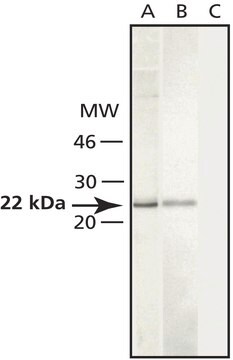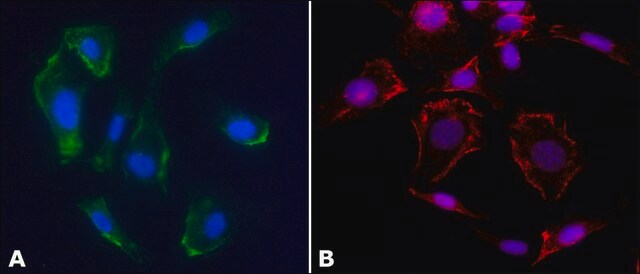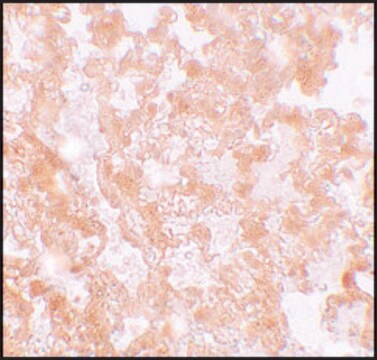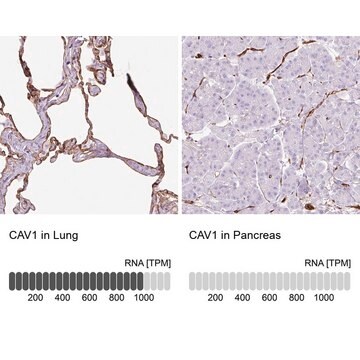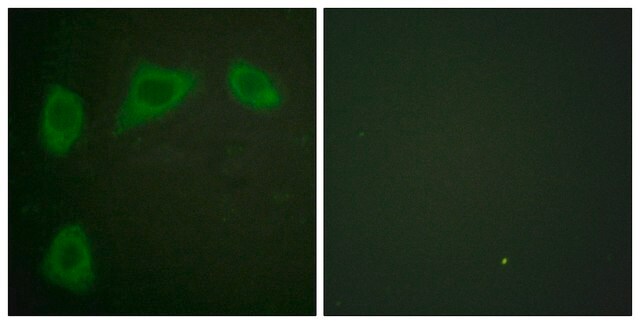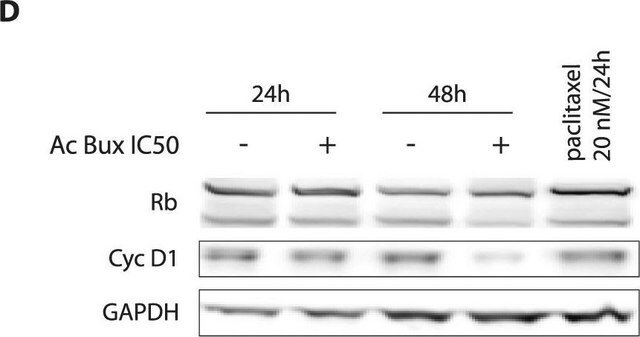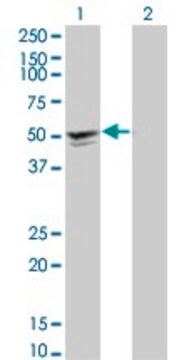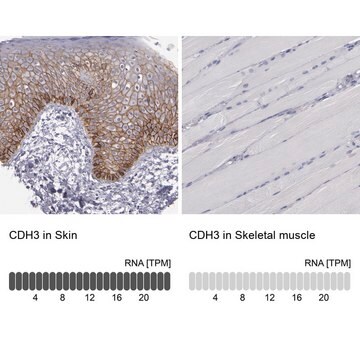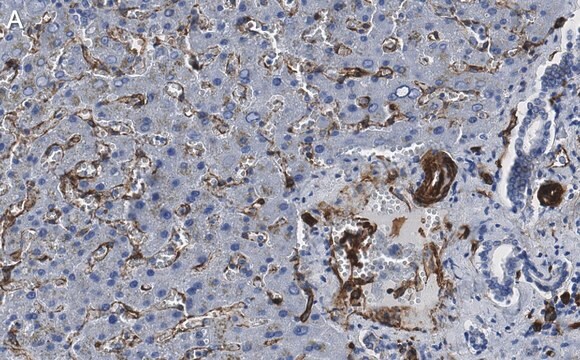SAB4200216
Monoclonal Anti-Caveolin-1 antibody produced in mouse

clone CAV1, tissue culture supernatant
Sinônimo(s):
Anti-BSCL3, Anti-CAV1, Anti-CGL3, Anti-MSTP085, Anti-VIP21, Anti-caveolae protein, 22kDa
About This Item
Produtos recomendados
fonte biológica
mouse
conjugado
unconjugated
forma do anticorpo
tissue culture supernatant
tipo de produto de anticorpo
primary antibodies
clone
CAV1, monoclonal
Formulário
buffered aqueous solution
peso molecular
antigen 22 kDa
reatividade de espécies
rat, human, mouse
validação aprimorada
independent
Learn more about Antibody Enhanced Validation
técnica(s)
immunohistochemistry: suitable
indirect immunofluorescence: 1:1000-1:2000 using human HUVEC or mouse 3T3 cells.
western blot: suitable
Isotipo
IgM
nº de adesão UniProt
Condições de expedição
dry ice
temperatura de armazenamento
−20°C
modificação pós-traducional do alvo
unmodified
Informações sobre genes
human ... CAV1(857)
mouse ... Cav1(12389)
rat ... Cav1(25404)
Categorias relacionadas
Descrição geral
Imunogênio
Aplicação
Western Blotting (1 paper)
Ações bioquímicas/fisiológicas
forma física
Exoneração de responsabilidade
Não está encontrando o produto certo?
Experimente o nosso Ferramenta de seleção de produtos.
recomendado
Código de classe de armazenamento
10 - Combustible liquids
Ponto de fulgor (°F)
Not applicable
Ponto de fulgor (°C)
Not applicable
Escolha uma das versões mais recentes:
Já possui este produto?
Encontre a documentação dos produtos que você adquiriu recentemente na biblioteca de documentos.
Global Trade Item Number
| SKU | GTIN |
|---|---|
| SAB4200216-200UL | 4061838035394 |
| SAB4200216-25UL |
Nossa equipe de cientistas tem experiência em todas as áreas de pesquisa, incluindo Life Sciences, ciência de materiais, síntese química, cromatografia, química analítica e muitas outras.
Entre em contato com a assistência técnica